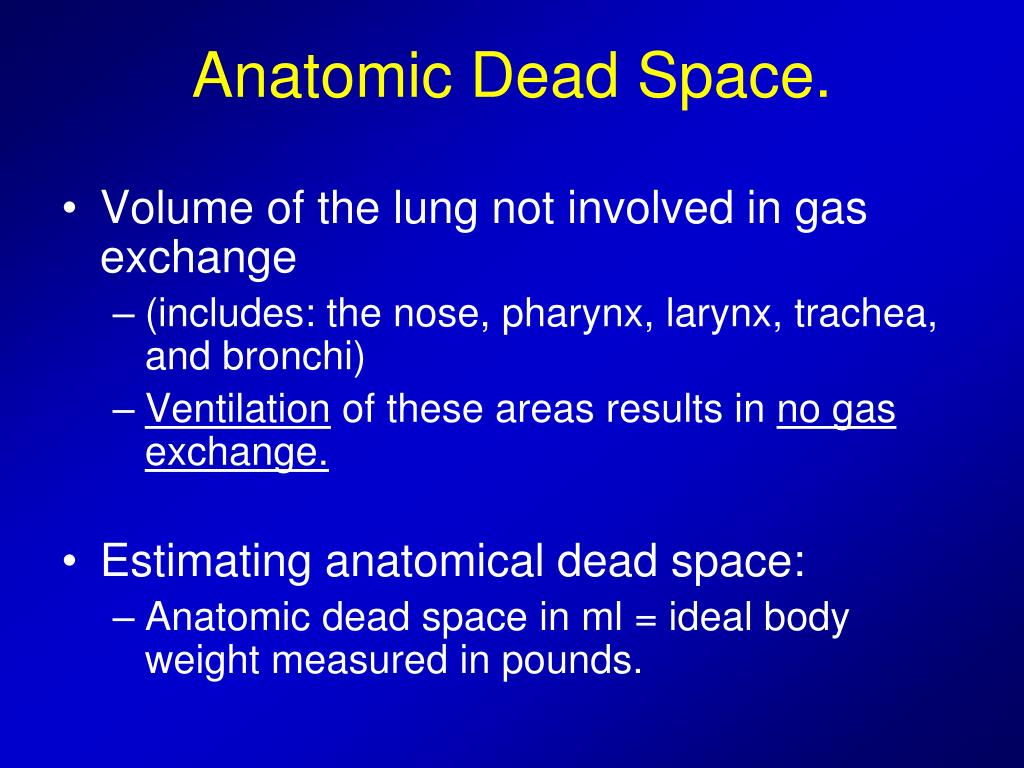

ResultsĮighty-one infants with a median (range) gestational age of 28.7 (22.4–41.9) weeks were recruited. Alveolar ventilation ( V A) was also calculated. Volumetric capnograms were constructed to calculate the dead space using the modified Bohr–Enghoff equation. Expiratory tidal volume and carbon dioxide levels were measured. MethodsĪ prospective study of mechanically ventilated infants was undertaken. We determined if there were differences in dead space and alveolar ventilation in ventilated infants with pulmonary disease or no respiratory morbidity. Finally some determinants for the reversed difference (PET-Pa) and the significance for conventional gas analysis are discussed.Dead space is the volume not taking part in gas exchange and, if increased, could affect alveolar ventilation if there is too low a delivered volume. It is argued that the difference (PET-Pa) depends on the lambda of the tracer gas, the buffering capacity of lung tissue, and the stratification caused by diffusion-limited gas transport in the gas phase.

This reversal is directly reflected in the relation between the physiological dead space fraction (1-PE/Pa) and the Bohr dead space fraction (1-PE/PET). Under simulated exercise conditions, we compute a reversed difference between PET and Pa compared with the rest condition.

Three ventilation-perfusion conditions corresponding to rest and mild and moderate exercise are simulated. The lambda values vary from 0.01 to 330.0 inclusive, and four values of D are used (0.5, 0.22, 0.1, and 0.01). The momentary volume-averaged alveolar partial pressure (PA), the expiratory partial pressure (PE), the mixed expiratory partial pressure (PE), the end-tidal partial pressure (PET), and the mean arterial partial pressure (Pa), are calculated as functions of the blood-gas partition coefficient (lambda) and the diffusion coefficient (D) of the tracer gas. Inert tracer gas exchange across the human respiratory system is simulated in an asymmetric lung model for different oscillatory breathing patterns.


 0 kommentar(er)
0 kommentar(er)
